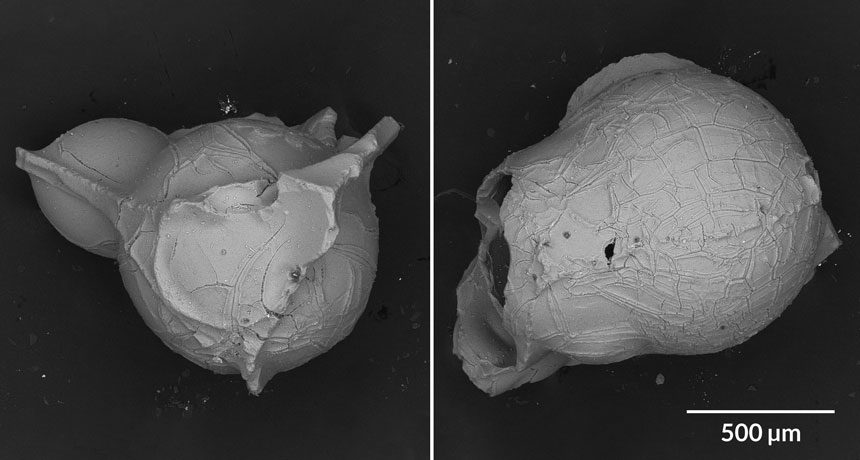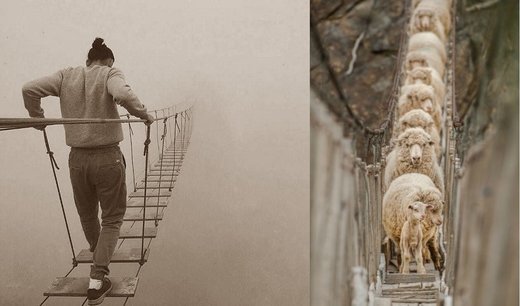
Bread-crust bubbleScientists have identified a new type of volcanic ash that erupted from a volcano in central Oregon roughly 7 million years ago. The particles are similar to larger bread-crust bombs, which form as gases trapped inside globs of lava expand, cracking the bombs' tough exterior. Bread-crust bubbles, each no more than a millimeter wide, have a distinctly crackled surface that can reveal secrets about how volcanoes erupt, researchers reported November 4 at the Geological Society of America annual meeting in Indianapolis.
Bred krəst ˈbəb(ə)l n.
Tiny, gas-filled beads of volcanic ash with a scaly surface.
The researchers had been sifting through other types of volcanic ash in the lab when they spotted the strange ash formations. Viewing the bits of ash through a scanning electron microscope revealed their crusty texture, indicating the gas bubbles expanded rapidly on their way up to Earth's surface, but did not pop. Analysis of the texture also indicated the bubbles' depth when they first exploded in the foamy magma. In the case of the Oregon sample, says volcanologist Ben Andrews of the Smithsonian Institution in Washington D.C., the frothy ash formed roughly 500 to 2,000 meters deep - a short distance, geologically - and erupted from the volcano at a rate of about 30 to 80 meters per second.
"Where magmas are sitting before they erupt and how fast they erupt - that gives us an idea how to forecast future eruptions," says Andrews, who discovered the spherical ash particles along with volcanologist Steve Quane of Quest University in British Columbia. The team is now collaborating with another group of researchers to study bread-crust bubbles collected from Laguna del Maule volcano in Chile.
Loafing around
Newfound volcanic ash is like a mini-me version of bread-crust bombs, which get their name from having a cracked surface that can resemble a loaf of bread. Bread-crust bombs form as gases trapped within a glob of hard-shelled lava expand. This one, about 15 centimeters in diameter, erupted from Mount St. Helens in Washington.
Citations
S. Quane and B. Andrews. Bread crusted bubbles: quantifying the brittle-ductile transition in volcanic conduits. Geological Society of America Meeting, Indianapolis, November 4, 2018.
Further Reading
T. Sumner. Natural concrete keeps lid on Italian volcano. Science News Online, July 9, 2015.
T. Sumner. Volcanic lightning forges tiny glass balls from airborne ash. Science News Online, March 3, 2015.




Comment: Perhaps this will provide some insight into the different kinds of volcanic activity that has occurred on our planet, and what we can expect should we start seeing this kind of ash again.
See also: